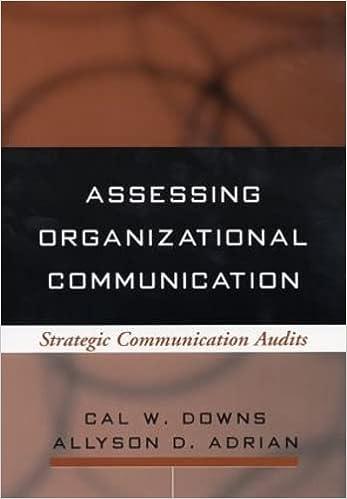Question
Required information [The following information applies to the questions displayed below.] At a recent board meeting of the Grayson Manufacturing Company, several individuals in attendance
Required information
[The following information applies to the questions displayed below.]
At a recent board meeting of the Grayson Manufacturing Company, several individuals in attendance expressed concern that they could not understand how the choice of an activity level for determining overhead application rates for the company could affect reported operating profits. The controller, Susanna Wu, told members of the board that, in fact, companies have some latitude in how overhead application rates are set. For example, she told members of the board that companies can spread budgeted fixed overhead for the period over budgeted (forecasted) activity, normal capacity, practical capacity, or even theoretical (maximum) capacity. All of this didnt resonate well with members of the board, who basically saw the discussion as just another example of how accounting can be used to manage income (i.e., cook the books). The chair of the finance committee of the board asked Susanna to generate a concise report that would illustrate, in concrete terms, the issues involved. In turn, you have been asked to prepare this report, which will be distributed to attendees at the next meeting of the finance committee. These committee members are adept at using spreadsheets and therefore have requested that your report be distributed to them electronically.
Based on your subsequent discussions with the controller, you have come up with the following information that is pertinent to your task:
- Basis for applying factory overhead costs to units produced = Standard machine hours.
- Budgeted fixed overhead (total) = $350,000 per year.
- Standard number of machine hours per unit produced = 2.0.
- Sales data: Units sold = 11,500; unit selling price = $100.
- Standard variable manufacturing cost per unit produced = $60.25.
- Beginning inventory of finished goods = 0 units.
- Budgeted operating costs: Variable = $4.95 per unit sold; fixed = $65,000 per year.
- Actual number of units produced during the year = 12,250.
- Capacity levels (in machine hours): Theoretical capacity = 30,000 hours; practical capacity = 27,000 hours; normal capacity = 25,000 hours; budgeted (forecasted) usage = 24,000 hours.
Required:
1. Calculate the amount of the fixed overhead production volume variance under each of the following denominator activity levels that can be used to set the fixed overhead allocation rate: (a) theoretical capacity, (b) practical capacity, (c) normal capacity, and (d) budgeted capacity usage. Indicate in each case whether the variance is favorable (F) or unfavorable (U).
2. Determine the end-of-year balance in the Finished Goods Inventory account (at standard manufacturing cost) under each of the following denominator activity levels for establishing the fixed overhead allocation rate: (a) theoretical capacity, (b) practical capacity, (c) normal capacity, and (d) budgeted capacity usage.
3. Assume that the practice of the company at the end of the year is to close any standard cost variances to cost of goods sold (CGS). What is the amount of operating profit that would be reported for each of the following choices for defining the denominator activity level for purposes of calculating the fixed overhead allocation rate: (a) theoretical capacity, (b) practical capacity, (c) normal capacity, and (d) budgeted capacity usage?
Step by Step Solution
There are 3 Steps involved in it
Step: 1

Get Instant Access to Expert-Tailored Solutions
See step-by-step solutions with expert insights and AI powered tools for academic success
Step: 2

Step: 3

Ace Your Homework with AI
Get the answers you need in no time with our AI-driven, step-by-step assistance
Get Started


